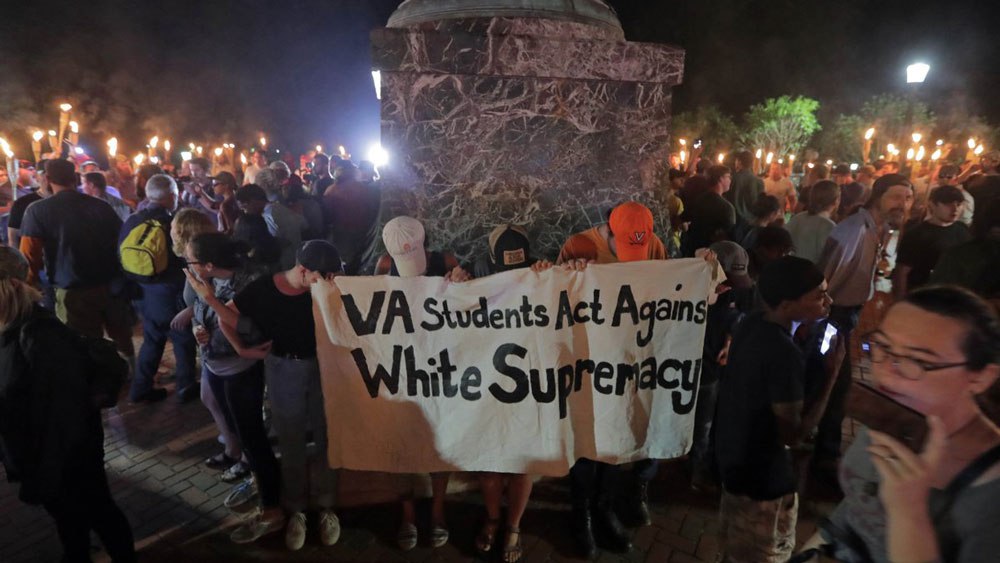Charlottesville: An Educational Equity Perspective

The tragic clash of white supremacists and counter protestors on the grounds of the University of Virginia was another painful reminder of America’s ongoing struggle with race and racism.
Racism manifests in all sectors, from healthcare and housing to employment and education. Given our role as education advocates, we examine the events in Charlottesville through the lens of history and the implications of race since the inception of public education in the U.S.
Our hope is that the death of Heather Heyer, and the conflict more broadly, will inspire reflection and action, and that this horrific event spurs each of us to contribute to this country’s ongoing, albeit uneven, efforts to make this a more just society.
Here are a few historic milestones in our nation’s efforts to give all citizens a decent shot at the American Dream (for a more detailed timeline from Race Forward, a nonprofit committed to racial equity, see here):
- While the Massachusetts Bay Colony starts offering public education nearly a century before, it isn’t until the 1790s through the 1820s when many states begin to make public education free for the predominantly white Christian families that wanted it.
- From the 1830s through the 1860s, most states deal with non-white children by giving them separate schools, if educating them at all.
- At the time, most southern states forbid teaching people in slavery to read.
- In 1846, the Mexican-American War ends and the U.S. annexes roughly half of what was then Mexico to establish much of the vast southwestern U.S. As part of the treaty, these new citizens were guaranteed citizenship and the continued use of the Spanish language (until 1998, when that option was taken away in some states, see Propositions 227 (CA) and 203 (AZ).)
- In the 1850s and ‘60s, California passes laws barring African-American children from school while Congress makes it illegal for Native Americans to be taught in their native languages.
- From the 1860s through the 1930s, a range of lawsuits across the country push against inequity, enabling Asian (Tape v. Hurley 1885), black (Ward v. Flood 1874), Mexican (Alvarez v. Board of Trustees of the Lemon Grove School District) and Native American children to attend public, albeit separate, schools.
- From the 1940s through the 1970s, legal efforts by organizations like the NAACP and the League of United Latin American Citizens (LULAC) create the groundwork for desegregation (e.g. Brown v. Board of Education). But often times, while desegregation was called for by the courts, the reality in our schools didn’t change until decades later—just recall the painful “busing” era in places like Boston and right here in Wilmington. Moreover, if you were a child with a disability, you didn’t see legal support until 1975, when, what is now called the Individuals with Disabilities Education Act, IDEA, passed.
- To this very day, massive disparities exist between low-income students, who are disproportionately black and Latino, and their higher income peers in terms of academic achievement, college access, and employment (see Delaware Public Education at a Glance). Related, funding inequities have persisted here in Delaware for more than 70 years among low-income students, children of color, those that do not speak English as a first language, and/or those who have a disability.
Our point is that what we saw in Virginia a few days ago was the worst symptom of deep, systemic and institutionalized racism. We saw the ugliest end of the spectrum in that collection of neo-Nazis, KKK members, and alt-right activists, and we all need to condemn them without reservation or equivocation. However, as a community, we also need to own the fact that we can do much more to dismantle racism and other forms of oppression in this country.
We can start by understanding our history and taking a hard look at what each of us can do to confront this collective challenge, whether it be by engaging in a difficult conversation or advocating for policy changes at the state or local levels.
August 13th was a horrible day, but we hope it inspires action rather than fear. Each of us can play a role. For us, one way we’re looking to make a difference is by prioritizing equity in education. By doing so, we can not only help the most vulnerable in our society, but we can lift us all.